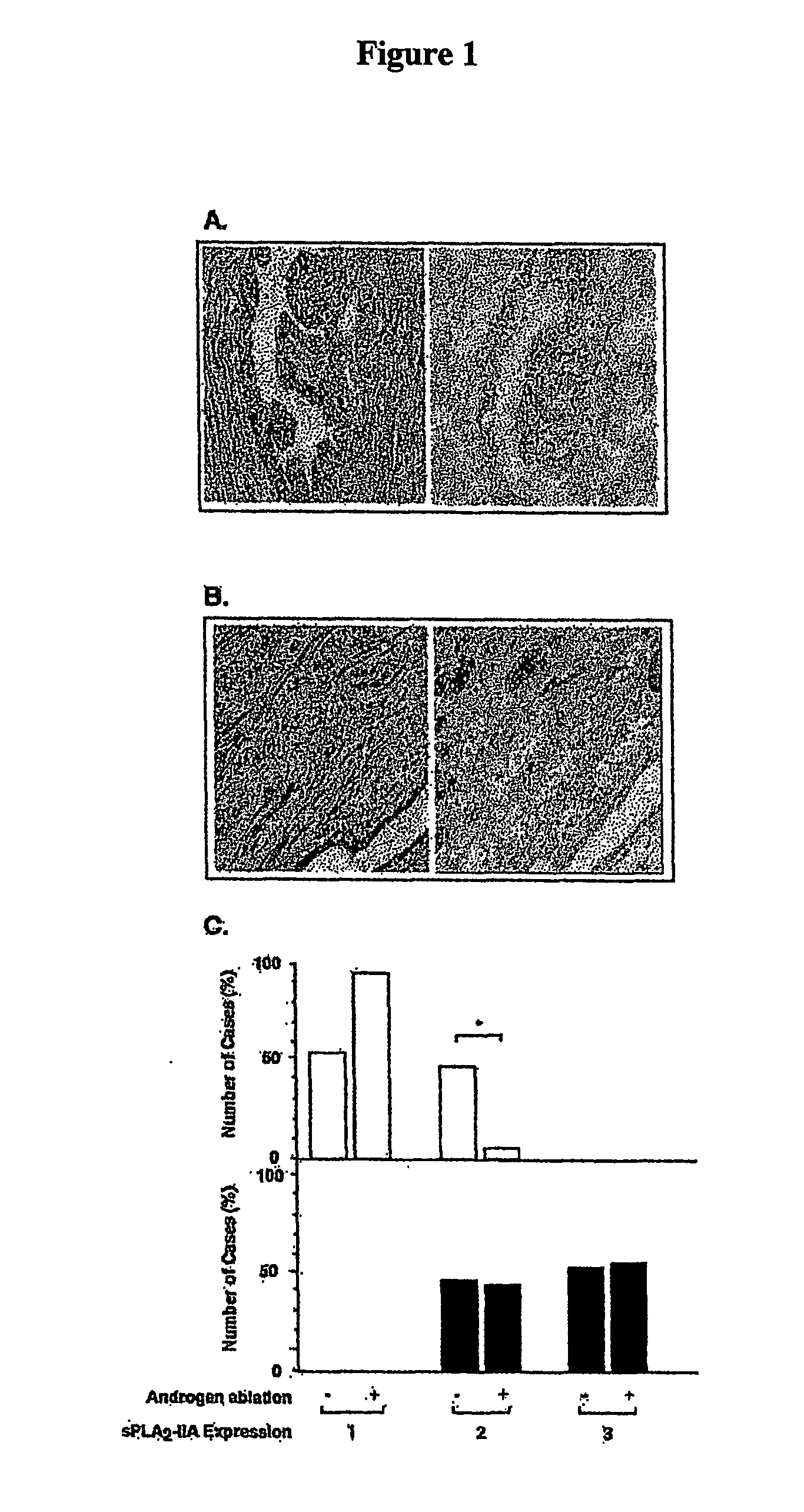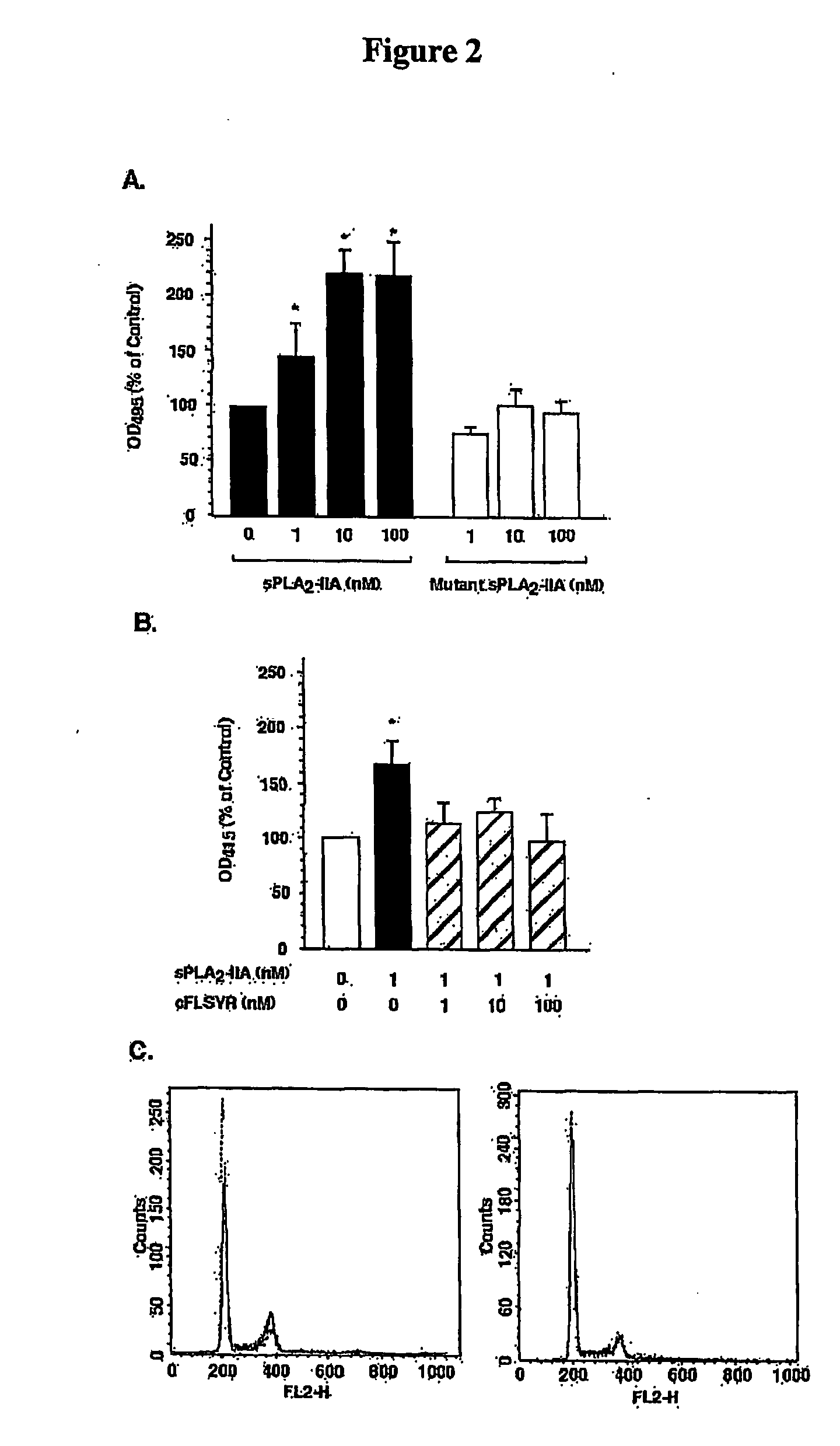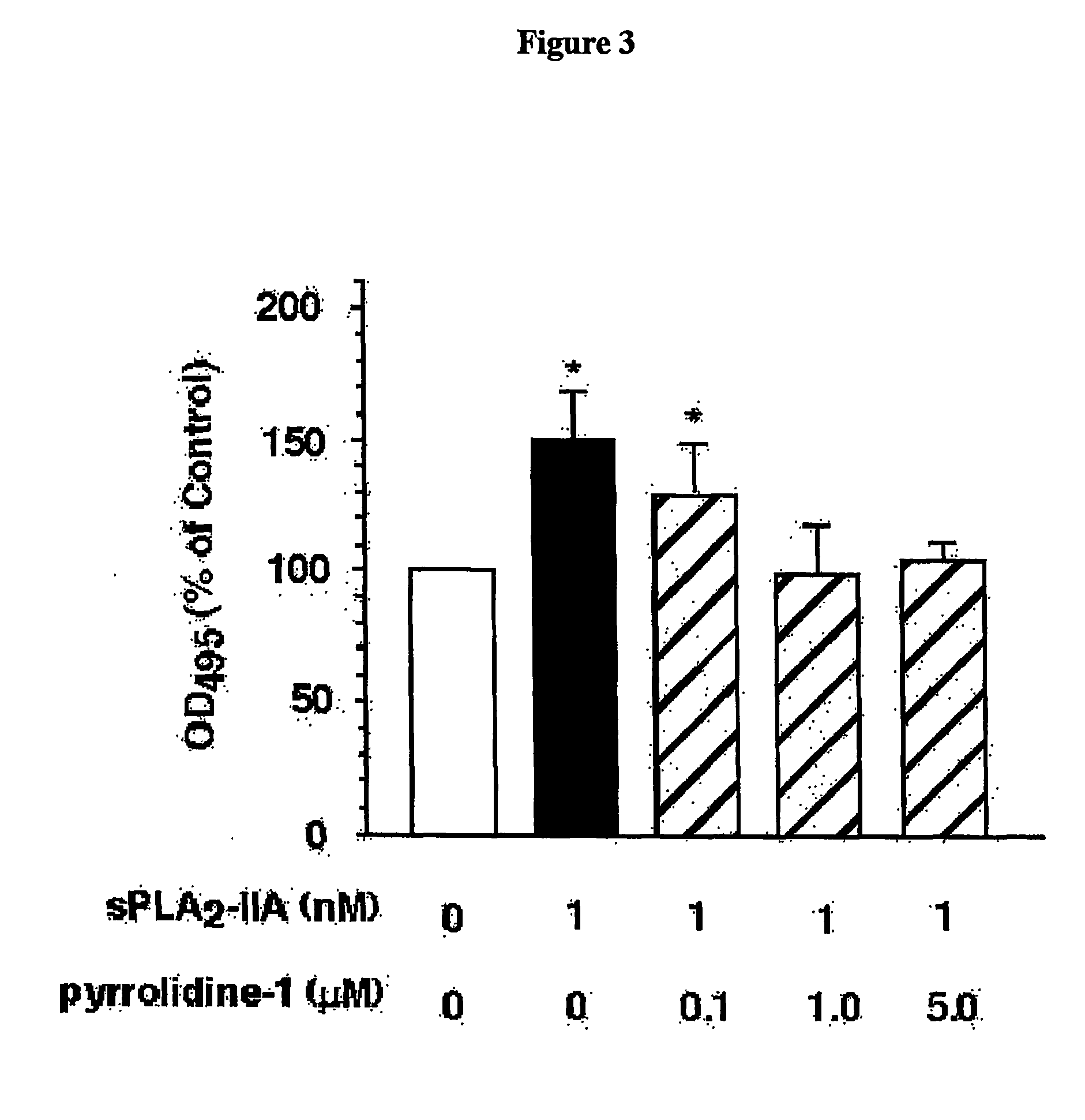Method of Inhibiting Prostate Cancer Cell Proliferation
a prostate cancer and cell technology, applied in the direction of peptide sources, cyclic peptide ingredients, non-active ingredients of pharmaceuticals, etc., can solve the problems of limited understanding of the aetiology of prostate cancer, inability to effectively treat metastatic androgen-dependent prostate cancer (aipc), and little progress in elucidating its aetiology, so as to achieve the effect of increasing the proliferation of cells
- Summary
- Abstract
- Description
- Claims
- Application Information
AI Technical Summary
Benefits of technology
Problems solved by technology
Method used
Image
Examples
example 1
sPLA2-IIA is Induced in Prostate Cancer Cells and Constitutively Activated in AIPC
[0140]We searched the database of Serial Analysis of Gene Expression (SAGE) to determine the steady state mRNA levels of individual PLA2 enzymes in prostate cancer. The cDNA libraries used for SAGE was PR317 normal prostate and PR317 prostate cancer, respectively (www.ncbi.nlm.nih.gov / SAGE), as both are derived from microdissected prostate tissues. We found that sPLA2-IIA mRNA was 22 times higher in prostate cancer than normal prostate, whereas other members were either not expressed in the prostate libraries or unchanged in cancer. To verify the SAGE result and extend the expression analysis to androgen-independent prostate cancer (AIPC), we examined sPLA2-IIA expression by immunohistochemistry in prostate cancer tissues from patients treated with androgen-ablation therapy for 3 months prior to radical prostatectomy. Cancer cells remaining in specimens following androgen-ablation therapy are regarded ...
example 2
Oncogenic Action of sPLA2-IIA in Prostate Cancer Cells
[0142]To examine the biological relevance of sPLA2-IIA to prostate cancer cell growth, we treated LNCaP cells with increasing doses of human recombinant sPLA2-IIA and monitored cell growth. LNCaP is the only available prostate cancer cell line that expresses both the androgen receptor and PSA. Exogenously-added sPLA2-IIA at doses as low as 1 nM, consistently and dose-dependently stimulated LNCaP cell growth as measured by the 3-(4,5-dimethylthiazol-2-yl)-5-(3-carboxymethylphenyl)-2-(4-sulphophenyl)-2H-tetrazolium (MTS) assay (FIG. 2A). In contrast addition of an activity-dead sPLA2-IIA mutant protein H48Q, showed no stimulation relative to untreated cells (FIG. 2A) indicating that enzyme activity is essential for the growth-stimulatory effect.
[0143]We have previously shown that human sPLA2-IIA is dose-dependently inhibited by a pentapeptide sequence comprising residues 70-74 of the native sPLA2-IIA protein (70FLSYK74) (Tseng, A.,...
example 3
Oncogenic Action of sPLA2-IIA Requires cPLA2-α Activity
[0145]Currently, two models are proposed to explain the action of sPLA2 on eicosanoid production (Murakami, M., Kudo, I. (2002) J. Biochem. 131:285-292). One is the direct cleavage of membrane phospholipids. In this model, sPLA2 binds directly to plasma membrane phospholipids and the released arachidonic acid serves as a substrate to produce eicosanoids. Lysophospholipids and / or eicosanoid products of arachidonic acid metabolism mediate indirect activation of the endogenous cPLA2-α via mobilisation of calcium. The enhanced cPLA2-α activity can in turn result in enhanced production of eicosanoids. The second model is indirect modulation of intracellular eicosanoid pathways via cell surface GPI-linked heparan sulphate proteoglycan receptors. The internalised sPLA2 supplies arachidonic acid to downstream enzymes either directly, or indirectly via activation of cPLA2-α through mitogen activated protein (MAP) kinase-mediated phosphor...
PUM
| Property | Measurement | Unit |
|---|---|---|
| somatic defects | aaaaa | aaaaa |
| frequency | aaaaa | aaaaa |
Abstract
Description
Claims
Application Information
 Login to View More
Login to View More - R&D
- Intellectual Property
- Life Sciences
- Materials
- Tech Scout
- Unparalleled Data Quality
- Higher Quality Content
- 60% Fewer Hallucinations
Browse by: Latest US Patents, China's latest patents, Technical Efficacy Thesaurus, Application Domain, Technology Topic, Popular Technical Reports.
© 2025 PatSnap. All rights reserved.Legal|Privacy policy|Modern Slavery Act Transparency Statement|Sitemap|About US| Contact US: help@patsnap.com



